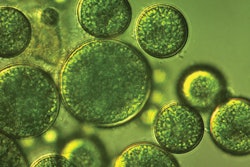
I’ve come to know rational, credible people on both sides of the issue, and have also encountered a fair share of charlatans as well. Through it all, my question has always been, wherein lies the truth? For years now, my sense has been that unraveling the issues surrounding chlorine requires both the long view and the broadest of perspectives.
We know, for instance that criticism of chlorine use is driven both by commerce and concerns about its impact on the environment. As a natural result, chlorine has fallen under intense scrutiny and given rise to an industry segment dedicated to providing alternatives. Peer-reviewed studies by seemingly legitimate researchers have linked chlorine’s use in pools and spas to a host of potentially detrimental issues. These include problems stemming from direct exposure such as aquatic athletes absorbing harmful by-products such as trihalomethanes through their skin, lifeguards inhaling air-borne byproducts resulting in respiratory problems, widespread exposure to potential carcinogens, and damage to swimmers’ teeth. Transporting and storing chlorine has led to problems with gaseous releases and fires in traffic accidents and in warehouses, and service technicians experiencing harmful exposure to chlorine gas. On top of that, the smell associated with chloramines, the corrosive effects on pools finishes and metallic components, and, of course, bleached swimsuits all paint a problematic if not grim picture.
Those marketing competing products, such as ozone systems and copper and metal ion devices, have made considerable hay out of this information and have earned strong market share by offering viable alternatives. On the other side of the issue, organizations such as the Chlorine Institute have done important work establishing standards and licensure for manufacturing and application practices and technology.
In seeking the truth, I’ve personally come to see value in arguments on both sides. In terms of chlorine’s dark side, it would be irresponsible to ignore the volumes of data that point to legitimate problems. Simple commonsense tells us the reason that chlorine is so effective at killing microorganisms and oxidizing organic compounds is that it is, in fact, a powerful poison and oxidizer. It’s use should be controlled and regulated and studies of its potential problems should continue.
On the other hand, chlorine has had a tremendously positive impact on societies the world over. When the city of Philadelphia began chlorinating its public water supply in 1900, the incidents of waterborne diseases plummeted almost overnight, a phenomenon that was repeated over and over again as the advent of chlorinated water spread from city to city. And when it comes to pools, let’s face it, if it wasn’t for chlorine, pool operators would’ve been forced to stick to drain-and-refill routines as the only way to keep water safe throughout much of the 20th Century, and that would’ve wasted an incalculable amount of water.
Again applying commonsense, isn’t it fair to acknowledge that while many consumers complain bitterly about chlorinated pool and spa water, we really don’t hear the same concerns about chlorinated water at the tap? Why is that?
I’ll tip my hand a bit here and admit that I’m an avid environmentalist at heart, and do personally like the idea of getting away from the use of potentially harmful chemicals. The fact that we have alternatives, including entirely biological treatment of water is a beautiful thing, giving consumers and our industry a range of choices.
On the other hand, I also really love the idea that water my kids swim in is free of harmful pathogens. And while I’ve never heard of anyone actually contracting cancer from swimming in a chlorinated pool or lounging in a spa, we do know for a verifiable fact that some have died from waterborne diseases, which they caught in pools and spas.
Clearly, chlorine is not the only answer to our water treatment needs and warrants scrutiny, but I’m not sure it’s the all-encompassing demon that some might have us believe.








































